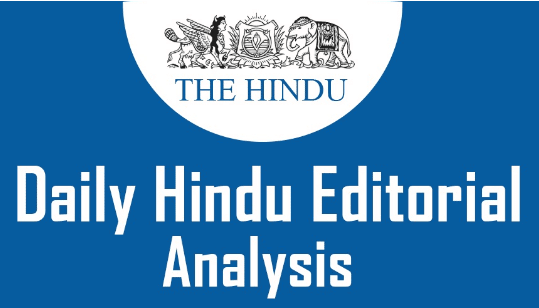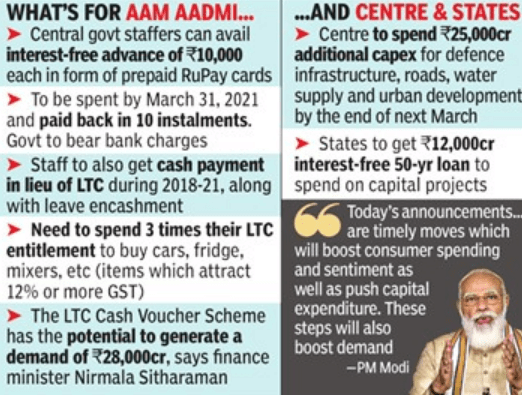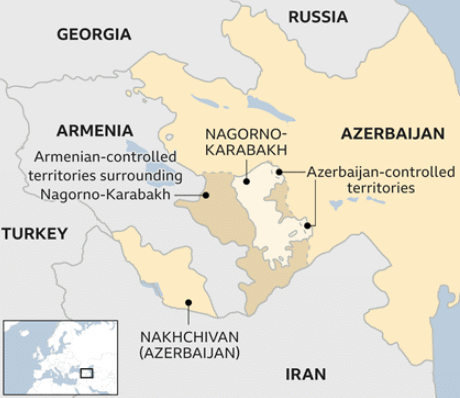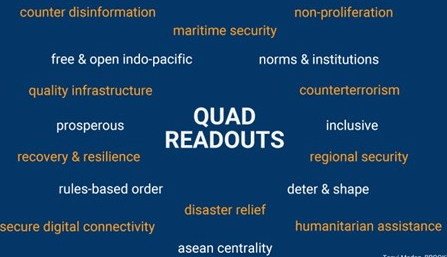The Hindu Editorial Analysis- 14th October, 2020 | Additional Study Material for UPSC PDF Download

1. A SLIM STIMULUS: ON CENTRE’S MOVE SPUR DEMAND-
GS 3- Indian Economy and issues relating to planning, mobilization of resources, growth, development and employment
Context
Finance Minister’s fresh set of measures, on Monday, to spur(push) consumer demand and capital expenditure include an interestingly designed tweak to the LTC allowances of government employees.

Boosting Demand
(i) Her reckoning(signaling) is that these would lend a ₹73,000 crore demand spurt to prop up(falling) the ailing economy in the second half of this year.
(ii) This could rise beyond ₹1-lakh crore if private sector employers offered similar LTC incentives.
(iii) With industrial output slipping for the sixth month in a row in August, the clamour(urge) for new stimulus measures had been growing ahead of a particularly bleak(weak) festive season.
(iv) But this package, which will cost the exchequer about 0.2% of GDP, taking overall fiscal support through the pandemic to 1.7% of GDP, may not be as persuasive as may have been envisaged(imagined).
(v) Enhancing the Centre’s capital expenditure in specific sectors by ₹25,000 crore from the extant level of ₹4.12-lakh crore is laudable.
(vi) But pandemic restrictions have affected the ability to get new projects going. Till August, just about ₹1.34-lakh crore of the budgeted capex had been spent.
(viii) The same problem plagues the ₹12,000 crore offered as an interest-free 50-year loan to States for capital spending over the next six months.
Loosening The Purse Strings
(i) States have been allowed to use these loans to pay off existing contractors’ dues, the amounts on offer are unlikely to have an impact.
(ii) ₹2,000 crore has been set aside for States that manage to complete three of four reforms mandated in the earlier Atmanirbhar Bharat package, in order to get additional borrowing leeway(freedom).
(iii) Only some States may qualify for this. Too many conditions also pervade(fill) the consumption push.
(iv) Linking LTC perks of government staff who have not availed them yet due to restricted travel during the pandemic to spending on non-travel items is an innovative nudge(push).
(v) But requiring them to spend three times their return ticket fares under LTC on goods and services attracting at least 12% GST from GST-registered vendors, may be too prescriptive and overlooks the reluctance towards discretionary spending due to low visibility on the economy’s prospects.
(vi) Eligible employees may find the scheme complex and too expensive to avail. One hopes the government has more in its quiver to expedite(hurry) recovery.
(vii) Waiting too long for the pandemic to ease before loosening the purse strings further could extend the pain.
(viii) The focus should not just be on conjuring(illusion) a trickle-down stimulus from those with their jobs and savings intact but also on relief measures for those without.
(ix) Even the IMF has been urging countries to spend now to diminish the damage.
(x) Avoiding spending now to maintain fiscal discipline and prevent a rating downgrade seems sensible, but if the underlying edifices(structure) of the country’s growth story crumble in the process, a future downgrade will become inevitable(unavoidable).
Conclusion
The govt. cannot wait for the pandemic to ease to loosen the purse strings further.
2. CRISIS IN CAUCASUS: ON ARMENIA, AZERBAIJAN AND NAGORNO-KARABAKH-
GS 2- Effect of policies and politics of developed and developing countries on India’s interests
Context
The ongoing fighting between Armenian rebels and the Azerbaijani Army in Nagorno-Karabakh, a self-declared republic within Azerbaijan, risks becoming a wider regional conflict.

Conflict
(i) Though Armenia and Azerbaijan agreed to a Russia-mediated ceasefire last week after days of fighting, the truce crumbled immediately amid a blame game.
(ii) Whatever the truth is, an emboldened(encouraged) Azerbaijan, backed by Turkey, seems determined to press ahead with its offensive.
(iii) The conflict over Nagorno-Karabakh is decades old. The region, largely populated by ethnic Armenians, is located within the international boundaries of Azerbaijan.
(iv) Under the Soviet Union, it was an autonomous province that was part of the Azerbaijan republic.
(v) In 1988, when the Soviet power was receding, the regional assembly in Nagorno-Karabakh voted to join Armenia, triggering ethnic clashes.
(vi) After the Soviet disintegration in 1991, Armenia and Azerbaijan went to war over this largely mountainous, forested enclave.
(vii) By the time a ceasefire was reached in 1994, the rebels, with support from Armenia and Russia, had established their de facto(by fact) rule and extended their influence to the Armenian border.
(viii) Ever since, the border has remained tense.
Intervention
(i) What makes the clashes now far more dangerous is the external intervention.
(ii) Turkey has called Armenia a threat to peace in the region; the Azeris and Turks share ethnic and linguistic bonds.
(iii) Also, the pre-Soviet Azerbaijan was a local ally of the Ottomans when they invaded Transcaucasia in the last leg of World War I.
(iv) For Turkey, which, under President Recep Tayyip Erdoğan, is trying to expand its geopolitical reach to the former Ottoman regions, the conflict over Nagorno-Karabakh is an opportunity to enter the South Caucasus.
(v) Turkey also has a particularly bad relationship with Armenia. But its problem is that Armenia is a member of the Russia-led Collective Security Treaty Organization (CSTO).
(vi) Russia enjoys good economic and defence ties with both Armenia and Azerbaijan.
(vii) But Armenia, as a CSTO member and host to a Russian military base, has more weight.
(viii) In a wider conflict, Armenia could trigger Article 4 of the CSTO treaty and ask for Russian help.
(ix) And if Moscow responds favourably, that would pit Russia against Turkey, a NATO member.
(x) Russia, already involved in military conflicts in Syria, Ukraine and Libya, may not like opening another front.
(xi) That is why it has re-emphasised its neutrality and hosted talks in Moscow for a truce. But it will be forced to take sides if the conflict spills into Armenia.
(xii) Both sides should understand the volatile situation and call off the hostilities(aggression).
(xiii) Nagorno-Karabakh has in the past witnessed large-scale ethnic violence.
(xiv) Instead of risking a regional war, Azerbaijan, Armenia and the Karabakh rebels should go back to the ceasefire and open up diplomatic channels.
Conclusion
Azerbaijan, Armenia and the Karabakh rebels should go back to the ceasefire.
3. QUADRILATERAL HOME TRUTHS-
GS 2- Bilateral, regional and global groupings and agreements involving India and/or affecting India’s interests
Context
(i) Regardless of how or when China’s misbegotten(ill-made) military adventure is going to wind down in Ladakh, one thing is clear:
(ii) It has breathed(given) fresh life into the Quadrilateral Security Dialogue as a loose, consultative entente(agreement) of like-minded democracies in the Indo-Pacific.
(iii) On October 6, the foreign ministers of Australia, India, Japan and the U.S. held a standalone meeting in Tokyo.
(iv) If the Quad is to prosper as a geopolitical construct, it would do well to heed four lessons drawn from the long arc of Asia’s history and geopolitics.

No Indo-Pacific System
(i) First, there is no such thing as an ‘Indo-Pacific system’.
(ii) There has never been one, as such, ever since the rise of the port-based kingdoms of Indochina in the first half of the second millennium.
(iii) Rather, there were two Asian systems — an Indian Ocean system and an East Asian system — with intricate sub-regional balances.
(iv) The sprawling British empire never managed to combine the Indo and the Pacific into a unitary system and the effort by a U.S. in global retreat and relative decline to artificially manufacture one to encircle China will be no more successful.
(v) Second, the Indo-Pacific region possesses no prior experience of enduring peace, prosperity and stability engineered from its maritime fringes.
(vi) Rather, dynamic long cycles of Chinese influence radiating outwards have alternated with sharp periods of centripetal turmoil(disturbance) as China and the Asian system collapsed upon itself.
(vii) The emerging practice of ASEAN-centred multilateralism is more in tune with regional tradition and historical circumstance than the post-18th century European ‘balance of power’ system,
(viii) The ‘flanking powers’ (Britain and Russia) resisted revisionist challengers to periodically restore the continent’s equilibrium.
(ix) For their part, the Indo-Pacific’s ‘flanking powers’, India and Japan, have never balanced Chinese power throughout their illustrious histories.
(x) Third, the sea lines of communication constitute the connective tissue that links the Indian Ocean to the Western Pacific.
(xi) It is also a valuable arena of leverage vis-à-vis Chinese shipping and resource flows. This leverage must be wielded judiciously on India’s terms, not on the Quad’s terms.
(xii) The latter, after all, has little to offer materially with regard to New Delhi’s continental two-front dilemma but ceding(giving) this chokepoint leverage will invite overwhelming Chinese pressure against the full range of India’s South Asian interests — to which the other Quad members possess neither will nor desire to answer.
(xiii) For the threat of interdiction to be credible furthermore, it must not be brandished(flourish) off-handedly.
(xiv) Except during a general war, no sustained and significant campaign to interdict(ban) the maritime trade of a major power has ever been successfully mounted since the Napoleonic Wars of the 19th century.
A Check On China’s Ambitions
(i) Finally, the Quad has a valuable role to play as a check on China’s Indian Ocean ambitions.
(ii) India must develop ingrained habits of interoperable cooperation with its Quad partners and, thereby, pre-emptively dissuade(discourage) China from mounting a naval challenge in its backyard.
(iii) On the other hand, it will be more than a decade or two before the People’s Liberation Army Navy will be credibly capable of projecting power in these waters.
(iv) The shores of the Indo-Pacific littoral are strewn with the bones of Cold War-vintage, pan-regional architectures that were divorced from the underlying security dynamics.
(v) The Quad must resist this temptation for precipitate design over purpose.
(vi) In 2018, in his keynote address at the Shangri La Dialogue, Prime Minister noted that India would “work with [its friends] individually or in formats of three or more for a stable and peaceful region, but [that these] friendships are not alliances of containment”.
(vii) Reconciling this capacity to resist armed revisionism while nudging the region’s geopolitics towards cooperation as opposed to conflict should be India’s, and the Quad’s, priority.
|
21 videos|562 docs|160 tests
|
FAQs on The Hindu Editorial Analysis- 14th October, 2020 - Additional Study Material for UPSC
| 1. What is the significance of the 14th October, 2020 UPSC exam? |  |
| 2. What does the Hindu Editorial Analysis on 14th October, 2020 discuss? |  |
| 3. How can the Hindu Editorial Analysis help in UPSC preparation? |  |
| 4. What are Frequently Asked Questions (FAQs) related to the Hindu Editorial Analysis? |  |
| 5. Where can one find the Hindu Editorial Analysis for UPSC preparation? |  |
















